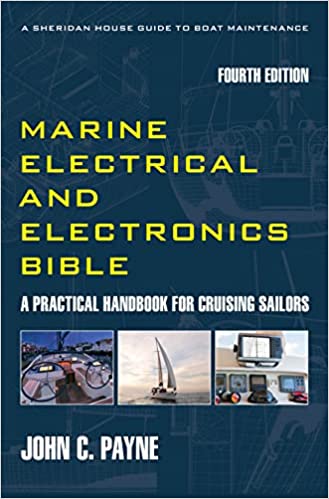Electric Boat Anchor Winch
Installing and using electric anchor winches on a boat offers a wide range of advantages that enhance safety, efficiency, and overall boating experience. These systems automate the labor-intensive process of deploying and retrieving anchors, making them especially valuable for solo sailors, older crew members, and vessels operating in challenging conditions. Electric anchor winches eliminate the need for manual hauling, which can be physically demanding and hazardous, particularly in rough seas or strong currents. With the push of a button, the anchor can be lowered or raised smoothly, reducing crew fatigue and minimizing the risk of injury.
Electric Boat Anchor Winch
Installing an electric boat anchor winch has its challenged and specific installation requirements. One is the whole question of powering it up. Given that the anchor windlass is forward and the battery power supply is aft, the electrical supply cable is long. With the combination of high current loads and cable length it is subject to voltage drop problems if incorrectly sized. Windlass performance and therefore lifting capability is reduced by the installation of incorrectly sized and rated cables. The windlass cables should be installed following the most direct route to the engine starting battery and protected by a properly rated isolator and fuse or circuit breaker protection. Voltage drop should not exceed 5% and ideally be sized at 3%. Typical working current loading is in the range of 55 amps at no load, 110 amps at half load, and 180 amps full rated load, but that varies with the windlass size of course.
The 4th Edition of the Marine Electrical Electronics Bible Get your copy and start becoming self-sufficient and save money on expensive technician callouts.Electric Boat Anchor Winch
Quick deployment and retrieval of the anchor are critical during emergencies, such as engine failure or sudden weather changes. Electric winches allow for rapid response, helping to stabilize the vessel and prevent drifting into dangerous areas. Many systems also include auto-stop features and overload protection to prevent damage to the boat or winch.
Electric winches offer precise control over anchor placement, which is essential when anchoring in crowded harbors or near underwater hazards. Some models integrate with GPS and wind sensors, allowing for automated anchoring routines and position-holding capabilities.
Electric Boat Anchor Winch
Modern electric winches can be integrated with helm controls, remote switches, and even smartphone apps, allowing for centralized operation. This is particularly useful for larger yachts where the helm is distant from the bow. By ensuring smooth and controlled anchor handling, electric winches reduce strain on the anchor rode, bow roller, and deck fittings. This prolongs the life of anchoring gear and minimizes maintenance costs. For long-distance cruisers, electric winches streamline anchoring routines, saving time and energy during frequent stops. They also make it easier to re-anchor if conditions change or better holding ground is needed.
Electric Boat Anchor Winch
I am frequently asked about the practice or my opinion of installing a separate battery forward adjacent to the windlass, as a means of reducing the heavy battery cable requirement, I do not recommend it. While this is one more battery to maintain and also a lot of extra weight forward where you don’t want it, it also still requires charging. I have lost count of battery failures, usually due to improper charging. So that means you have the extra weight up forward, along with chain and windlass, but you also need a good sized cable to charge the battery with. This means that a cable at least 30-40% of the anchor windlass motor cable would need to be run to also compensate for the voltage drops, so the real advantages are negated. The engine starting battery should be used as it has a high cranking amp (CCA) rating and is more capable of delivering the currents required by a windlass at maximum loads. Before you start telling me “what about running down the start battery” the fact is you should be running your engine and motoring when retrieving and anchor. What happens is that the engine alternator takes most of the windlass load when underway and motoring up on the anchor when heaving.
Electric Boat Anchor Winch
Many windlasses have DC starter motors, and some now use permanent magnet motors, typically in the range 600-1000 watts which simplifies construction and reduces weight and size. They do cost more but they use a lot less power and do not need the maintenance. It is important to maintain windlass DC motors if you do a lot of anchoring, as brushes wear, commutators wear and performance suffers. If you do a lot of cruising and anchoring then think about a service or inspection every 12-18 months.
Some systems include chain wash features that rinse mud and debris off the anchor and rode before they reach the deck, keeping the boat cleaner and reducing corrosion.
In summary, electric anchor winches are a smart investment for any boat owner seeking safer, more efficient, and more comfortable anchoring. They transform a traditionally strenuous task into a seamless operation, allowing boaters to focus more on navigation, safety, and enjoyment.
Check out DC motor information here. More electric anchor windlass information and anchor handling advice.
